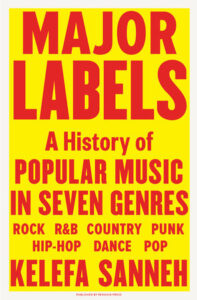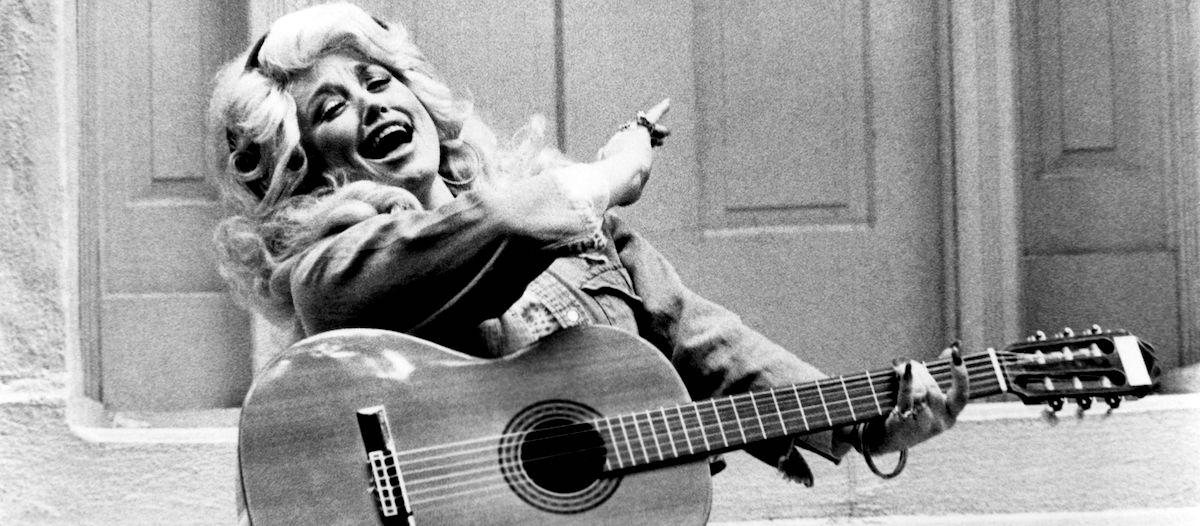Just about everyone can agree on Dolly Parton. But when it comes to country music, people seem to disagree on just about everything else. From the start, it was marketed as unusually honest music, linked to the perceived simplicity of rural life in America. Country music is more old-fashioned than rock ’n’ roll, but less traditional—or, rather, more ambivalent about tradition. The basic template for a rock ’n’ roll band has remained remarkably stable ever since the seventies: drums, electric bass, and, above all, electric guitar. But in country music, traditional instruments like the banjo and the pedal steel guitar tend to fall in and out of favor, as country singers try to figure out precisely how “country” they really want to be.
Music historians sometimes trace the birth of country music as a recorded genre to the 1920s, when the Victor Talking Machine Company—not primarily a record label, but a manufacturer of record players—sent Ralph Peer south in search of singers. Some of the Black performers he recorded, including Will Shade, leader of the Memphis Jug Band, later came to be viewed as R&B pioneers. And some of the white performers were later regarded as forefathers of country music. Peer recorded Fiddlin’ John Carson, a former cotton-mill worker from Georgia, singing a 19th-century minstrel song, “The Little Old Log Cabin in the Lane,” that had originally been written by Will S. Hays, a white songwriter, using Negro dialect, or an approximation of it.
Peer recorded Jimmie Rodgers, a former railroad brakeman from Mississippi, whose playful, yodeling songs made him one of the first country stars. (In 1970, Dolly Parton took a forty-year-old Jimmie Rodgers song to No. 3 on the country chart, yodeling all the way.) And Peer recorded the Carter Family, from the Appalachian Mountains in western Virginia. “Mother” Maybelle Carter, a virtuoso on the guitar and the autoharp, popularized the pick-and-strum style that may still be what you hear in your head when you think of country music.
For a time, all this music was considered folk music, a term that made it seem rural and traditional, and possibly unchanging, as if the songs were passing endlessly from one generation to the next. Billboard began publishing a chart of Most Played Juke Box Folk Records in 1944; five years later, the magazine introduced another chart, focusing on radio stations, which were booming: Country & Western Records Most Played by Folk Disk Jockeys. The two halves of the name evoked the hybrid nature of the music itself. “Country” denoted the Appalachian legacy of acts like the Carter Family—hillbilly music, as it was sometimes called, not always kindly. And “Western” acknowledged the influence of Texas and the Southwest, and the increasing popularity of cowboy music and imagery.
Hank Williams was the paradigmatic modern country star, and his rural Southern credibility was part of his appeal. In 1947, his record company promised listeners that his latest single was “as hillbilly as korn likker.” He called his backing band the Drifting Cowboys, in tribute to the cowboy movies he loved, and in accord with the genre’s quasi-Western identity. (Williams died, possibly from drugs and alcohol, in 1953, at the age of twenty-nine. He has been country music’s patron saint ever since.) In time, “& Western” faded out of the genre’s name—Billboard renamed its chart Hot Country Singles in 1962. But the Western influence stuck around, and nowadays hardly anyone stops to wonder why Nashville, a city not known for ranching, is synonymous with cowboy hats and boots.
At the start of the 1970s, when Hemphill published The Nashville Sound, country music was still widely viewed as a regional phenomenon. By the end of the seventies, thanks in part to Parton’s success, country music was a national craze, with radio stations proliferating and record sales booming. “If 1978 went down as the Year of Disco,” an article in Billboard declared, “then 1979 will definitely be remembered as the year that saw country breaking loose everywhere.” Esquire had recently published an article about country music fans in Houston: they weren’t ranchers, but they were enthralled by cowboy mythology, and they spent their nights at a supersize honky-tonk called Gilley’s.
In 1980, this article was turned into a movie, Urban Cowboy, about a man in a cowboy hat, played by John Travolta, who was struggling to tame a mechanical bull in a local bar. (The film was not, despite its plot, a comedy.) Just as an earlier Travolta film, Saturday Night Fever, pushed disco into the mainstream, Urban Cowboy did something similar for country music, with similarly confusing results. For a time, lots of people wanted to be country, even if they weren’t quite sure what “country” meant. The next year, a perennial country hitmaker named Barbara Mandrell took note of this situation with a song called “I Was Country When Country Wasn’t Cool.” The title was a humblebrag, and maybe a message to post-Travolta converts, while the verses paid charming tribute to country authenticity: flannel shirts, the Grand Ole Opry, “puttin’ peanuts in my Coke.” But the song’s piano-driven arrangement was practically soft rock. The song raised—but didn’t quite settle—a question that has been asked ever since country music stopped being folk music and started being something else. What does country music even mean in the age of rock ’n’ roll? Or the age of disco? Or the age of hip-hop? What is country music?
One answer, provided by a small but insistent minority, is that country music is and ought to be what it used to be: fiddles and banjos and pedal steel, twangy guitars and twangy accents, stylized lyrics and lonesome harmonies. To these traditionalists, country music is an endangered species, at risk of going extinct, if it hasn’t already. In just about every phase of the genre’s evolution, there have been people lamenting that the older, truer country music is being left behind, and often these killjoys have been right, or half-right. The rise of radio, which created a national audience for country music, also helped extinguish the regional musical traditions that were the genre’s original source.
An answer to the question of country identity is that country music is a cultural identity, something that lives deep within anyone lucky enough to have grown up that way.And many people since then have worried that country music is growing less distinctive and more similar to every other kind of music. “I think we’ve strayed away from country and got more into pop,” observed one disappointed country listener in 1990. It turned out, though, that this disappointed country listener was also a successful country singer: Garth Brooks, a tradition-minded fellow who also, over the following five years, did as much as anyone to push the genre toward mainstream pop. These days, Brooks remains one of the genre’s biggest attractions, and if he now seems like a rather old-fashioned figure, that says something about how many country stars followed his example over the past few decades, and kept pushing.
A second answer to the question of country identity is the Parton answer: that country music is a cultural identity, something that lives deep within anyone lucky enough to have grown up that way. Not long ago I interviewed Morgan Wallen, a country star who emerged at the end of the 2010s, and who grew up listening to radio-friendly rock bands like Breaking Benjamin and Nickelback. “It may not have been the biggest influence in my life, as far as musically,” he told me, when I asked him about country music. “But once I started writing songs, it just sounded country. And I was, like, well, I guess I’ll sing country music, because this is the life I know.” Country music has remained distinctive partly because “country” refers to something more than music: the genre’s name is also a demographic, a group of people who tend to be white and tend to think of themselves as not quite at home in the city, even if that is where they happen to live. (Wallen grew up in tiny Sneedville, Tennessee, although his family later moved to Knoxville, a midsize city.)
Often, “country” has been treated as a rough synonym for a handful of terms that are often pejorative: “hillbilly,” “redneck,” “hick.” And often, this social identity has given singers like Parton—and, for that matter, Wallen—freedom to cross musical boundaries. If country is a culture that you have to be born into, that means outsiders will not necessarily be welcome. But it also means that insiders have room to experiment, as long as they don’t forget where they come from. As hair-metal bands discovered in the eighties, fans will let you get away with murder, as long as you look and act the part.
The third answer to this question is the least idealistic, and perhaps the most plausible. Barbara Mandrell, the singer who put peanuts in her Coke, had all the country credibility a singer might want: she was raised on the old “hillbilly” records, and she was an accomplished steel guitar player before she was a teenager. But she succeeded, in the 70s and 80s, with a series of soft-rock ballads and came to seem like the epitome of pop country. She represented Nashville at its most ingratiating. But she also represented Nashville at its most resourceful and flexible, finding ways to incorporate the sounds of other genres: saxophone solos and synthesizer parts on record; choreography and cabaret-style monologues onstage. Mandrell knew that some audiences considered her music inauthentic—she remembered getting a “decidedly distant” reception at a country music festival in London, where concertgoers were apparently expecting a more old-fashioned performance. In her autobiography, though, she wrote that she was proud to have played a part in the genre’s evolution. “To some degree,” she wrote, “country music is whoever happens to be hot in Nashville and on country stations at the time.”
Even more than most genres, country music aims to please its fans—not for nothing is the industry’s most coveted award called Entertainer of the Year. This is why Mandrell, like most mainstream country singers of the past half century, paid close attention to radio playlists and Billboard charts. This is why, too, her own country hits often gestured toward mainstream pop. And yet this eagerness to please never eroded her strong sense of identity—or the genre’s. On the contrary, by paying unusually close attention to their fans, country singers and executives have encouraged listeners to be not only loyal but tribal, thinking of themselves as forming a country community.
Just as “R&B” has historically referred to music made by and for Black people, “country” has historically referred to music made by and for white people—indeed, over the years, this commitment to whiteness has often been an implicit theme in the music, and occasionally an explicit one. Not all white people, of course: the genre has often claimed to speak to, and for, a specific kind of white people. Some country songs make the genre seem like the voice of the respectable American mainstream; others make it seem like a rebellion against mainstream respectability; most great country singers have songs of both types. But all successful country singers realize that there is an identifiable and influential country music audience. And many of them acknowledge that country music is whatever those people want it to be.
Commitment to whiteness has often been an implicit theme in the music, and occasionally an explicit one.Over the years, this third answer has mainly won out: country music endures and thrives today because “country” listeners say it does. But the argument over who belongs in country music, and how it should sound, never died down. Often, the most popular country acts have defined themselves in opposition to one or another perception of the genre’s mainstream, like Garth Brooks, disdaining pop country even while he perfected his own state-of-the-art version of it. For a while, the Dixie Chicks redefined country stardom, although they were eventually pushed out of the genre—thereby reminding country singers everywhere that plenty of limits still remained. Taylor Swift was one of the greatest country success stories of all time, although her trajectory eventually propelled her up and away from Nashville and from country radio. And in 2019, an unknown Black singer called Lil Nas X conquered the world with “Old Town Road,” a twangy, danceable delight that became one of the biggest hits in pop history, inspiring a debate over whether it should be considered a country song at all.
Unlike Dolly Parton, or Morgan Wallen, I did not grow up “country,” by any possible definition. Neither my parents nor my peers paid any attention to country music, beyond the occasional big hit. And so when I first started spending time with the genre, as a full-time critic and therefore a full-time concertgoer, it might as well have been a species of world music, exotic and sublime. I already knew a few of the classics—even as a teenage punk rocker, I had grasped the countercultural appeal of Johnny Cash, alternately stern and silly, entertaining a rowdy audience at Folsom Prison. But I was increasingly drawn to what some people were dismissively calling “new country”: the sweet, hybrid concoctions that filled country radio playlists.
Nashville seemed like a city of perfectionists, stuffed with great players and great writers, working within the same narrow parameters, all trying to solve the same puzzle: how to write the perfect song. I loved the idea that a chorus might double as a punch line. (“I may hate myself in the morning / But I’m gonna love you tonight,” as Lee Ann Womack sang.) I loved the way the pedal steel could make even the goofiest song sound a little bit wistful. And I thought there was something brave and audacious about the genre’s insistence on big hooks and unambiguous words: no squalls of noise, no impressionistic lyrics, nowhere to hide. Those songs became a permanent part of my musical diet, and of my life; when I got married, in 2009, my wife, Sarah, and I had our first dance to a country song, “It Just Comes Natural,” a sturdy and warmhearted 2006 hit by George Strait.
And part of the fun of going to country shows in and around New York City was that it felt like leaving town: the crowds were full of transplants from other parts of the country, interacting with the easy conviviality of expatriates abroad. Often, tributes to the military, rarely emphasized at other New York concerts, inspired huge, stirring ovations. At least once, in response to nothing in particular, a crowd started chanting, “USA! USA!”
By then, in the 2000s, the genre was figuring out how to emphasize rock ’n’ roll guitars and, more and more, hip-hop beats; it was sometimes grappling, too, with the meaning of its long-standing identity as white music. Through it all, country music still mattered, not least because the audience did: the question of who deserved to be considered a country singer was related to the question of who would get access to the country market, which remains distinct, and which has grown vastly bigger and more lucrative since Hemphill went to Nashville. This is one of the most surprising things about country music: how it has remained a genre worth fighting over and still remains one.
_______________________________________

From Major Labels by Kelefa Sanneh. Reprinted by arrangement with Penguin Press, a member of Penguin Group (USA) LLC, A Penguin Random House Company. Copyright © Kelefa Sanneh 2021.



